I recently had a very interesting discussion with Jean-Michel Jeanselme from Sames Kremlin and Gabriel Mănoiu from Falk Consulting, the company that represents them in Romania, about the application of electrostatic varnishes. Sames Kremlin, part of the EXEL group, is a French manufacturer of professional spray guns and equipment. Our meeting was a follow-up to the discussion on electrostatic systems we had with Gabi Manoiu last year at BIFE SIM, when we talked about their efficiency and safety in operation, and their use by both large and small manufacturers.
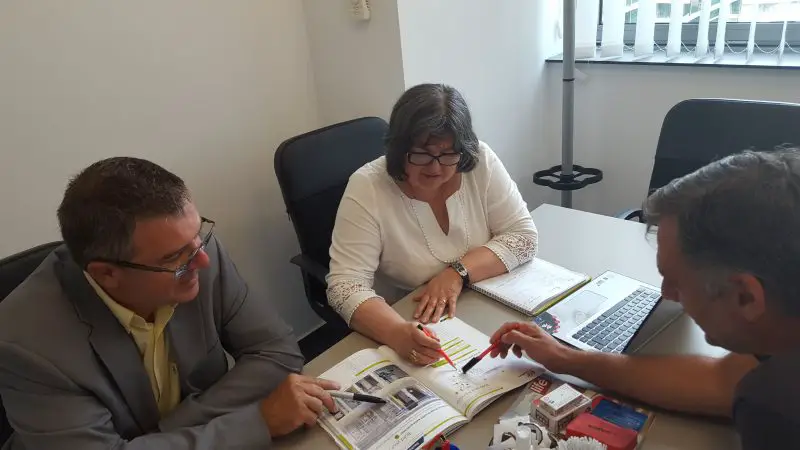
The other day Jean-Michel Jeanselme, Director of Development in the Europe-Middle East-Africa (EMEA) region and a very good specialist in electrostatic field application, was on a business visit to Romania. Gabi remembered our discussion and suggested a meeting to find out more about this way of applying varnishes on wood, for some apparently impossible given the insulating properties of wood.
The principle of electrostatic field application has been extensively discussed in article dedicated to this type of varnishing. It is based on the movement of lacquer particles along the lines of an electromagnetic field formed between a gun (or bell) charged with negative charges and an object charged with positive charges. The electrically charged particles are attracted to the object, give up their electrical charge and are retained on its surface. This results in a very good application yield, with the material also settling on the back of the object to be finished, even if the application is only made from the front. And all that material that goes on the back of the object is actually the over-spray, i.e. the material that would be lost in a normal spray. Application is done with an electrostatic gun or a system called a bell gun, and there are differences in yield, quality and maintenance between the two types of application.
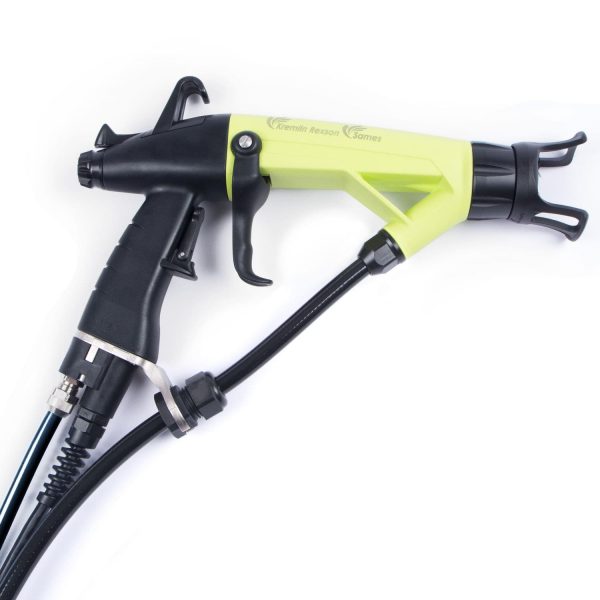
photo source: directindustry.com
As I said, the yield of such an application is very good, which also prompted me to write this article. Electrostatic field application has evolved a lot and has become very safe. We are talking about yields of 95% and applying waterborne products in complete safety, which is almost unbelievable in the idea that it is water and electricity taken together.
For electrostatic application to be possible, certain conditions must be met:
- the moisture content of the wood should be between 6 and 10-12%;
- The viscosity of the products to be applied must be 70 sec Ford 4 cup when applying with a spray gun and 50 sec Ford 4 cup when applying with a bell system;
- the installation must have a grounding system;
- the installation must be kept continuously clean.
Using electrostatic systems, 1000 cc product/min can be applied if the application is done with a gun and 500 cc/min if the application is done with a bell system. The film quality is better when applied with the bell, but the operator must be well trained, have a thorough knowledge of the field and maintenance must be carried out continuously. The material transfer efficiency is 95% with the bell and 80-85% with the gun.
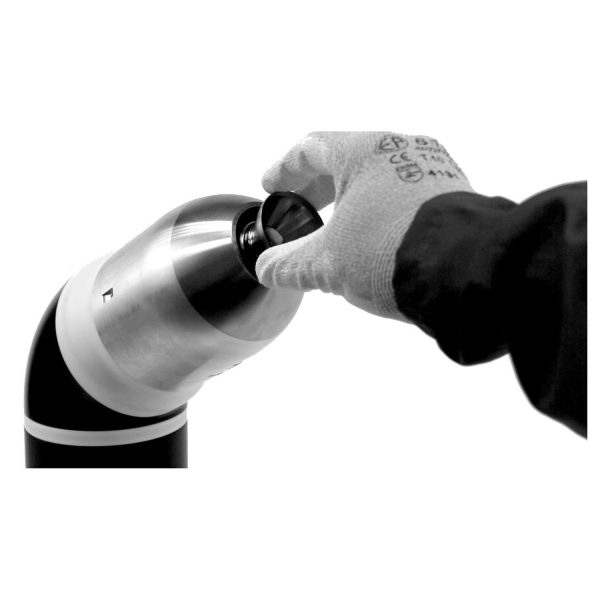
photo source; directindustry.com
There are also options for small producers for whom large and sophisticated installations are not an option. Basically, application systems fall into 3 categories:
- simple pistols - application is done by a person handling the pistol;
- reciprocating - application is made by a robot with a vertical translation movement;
- anthropomorphic robots - application is done by a robot that copies the movements of the human hand, applying the material from any angle and can be programmed to repeatedly apply the material to any shape.
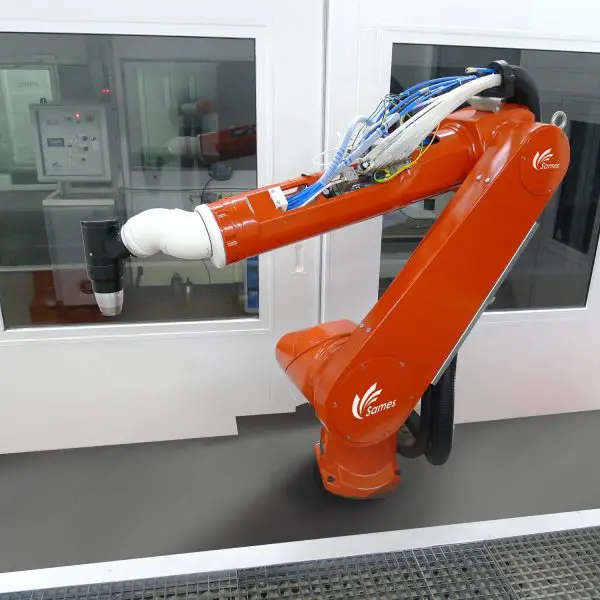
Electrostatic field versions are available for all these equipment categories. So it is possible that a small manufacturer, who spray-finishes intricately shaped objects with very high material losses, might buy an electrostatic spray gun.
The number one priority of these systems is safety, i.e. "safety first". When applying solvent-based products, the electric charging of the material takes place only at the tip of the gun, practically only 5 cc of product contains electric current. Everything is full of sensors, and at the slightest change in voltage a signal is immediately sent to stop the whole application, so that the next 5 cc of material will not be electrically charged. The message is sent in nanoseconds.
In the case of water soluble products the material is fully charged with electricity, the water transmitting the electric current. For this reason there are many more safety systems and they often duplicate each other for added safety. Here too, at the slightest voltage variation, the generator is shut down in nanoseconds. The application system and the material container are insulated with gratings. There are electrical discharge modes in all areas of the installation. The folks at Sames Kremlin are very proud of their coaxial cable that provides both conduction and discharge of electricity. With its help the material left on the route when the generator is switched off can also be electrically discharged.
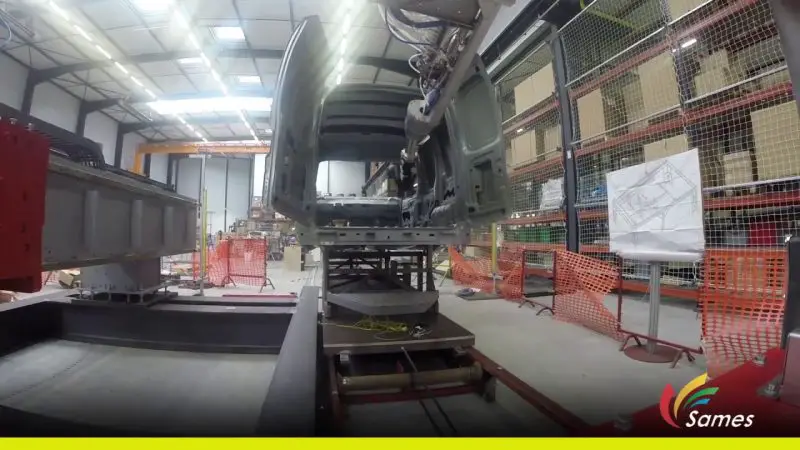
Such application systems are commonplace in areas such as automotive, where metal and plastic have been painted like this for years. I asked Jean-Michel how much of their production goes to the furniture industry worldwide and the answer was 30-35%. I find that an impressive percentage, which says everything about how safe the equipment is. He told me that they have not had a single case of injury or death from the current in these systems.
Because I am convinced that no matter how many words I say and no matter how many arguments I invoke, they are not as good as a picture or a film, I leave here a video taken at the commissioning of such equipment, at a factory in Romania. You will see how, at a certain point, the mist produced by the sprayed lake disappears, settling quietly on the piece. Around the 35th second. Enjoy watching.

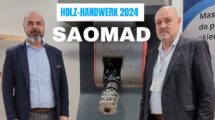















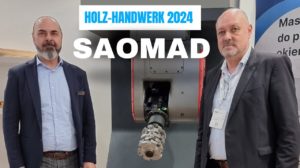

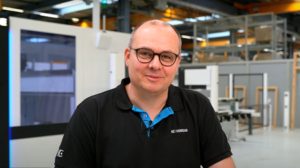
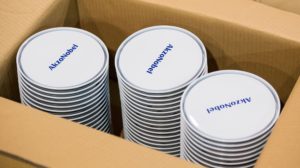



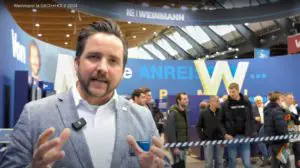
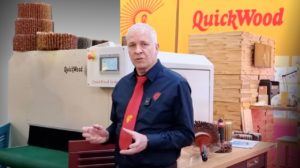

For programming the robot arm to
a car painting booth is possible?
Thank you!
Hello! This kind of technology is frequently used in the automotive industry. I recommend you to talk directly to Falk Consulting representatives. You can find the link to their website in the article.
All the best!